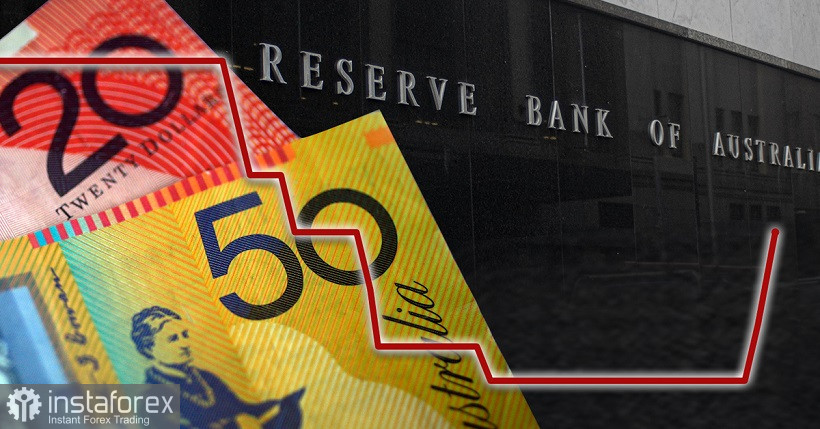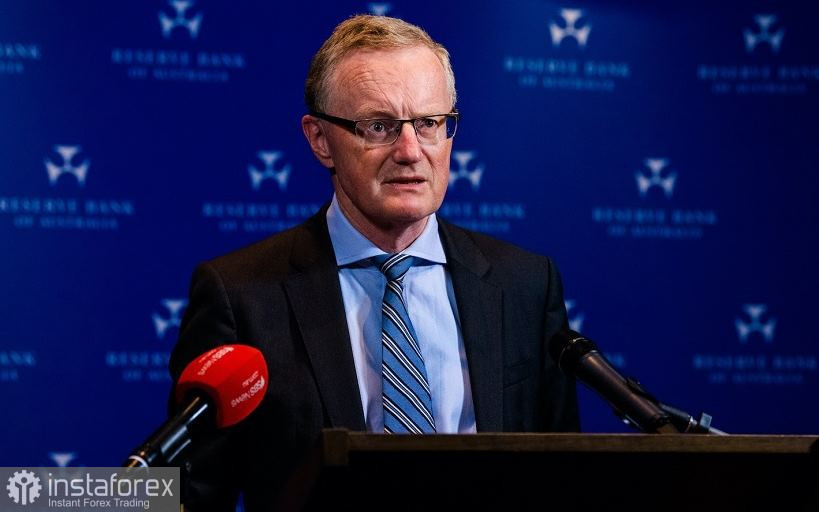Tomorrow, July 5, the next meeting of the Reserve Bank of Australia will take place. This meeting will not be a passing one: according to the forecasts of most experts, the regulator will raise the interest rate by another 50 points, that is, up to 1.35%. In addition, following the meeting, the head of the central bank, Philip Lowe, can talk about further steps in this direction—after all, it is obvious that this is not the last rate increase this year.
The pace of tightening monetary policy will be determined by incoming data, primarily in the field of inflation and the labor market. Lowe will certainly not announce the planned trajectory of further increase. However, his rhetoric may still have an impact on the AUD/USD pair: a more hawkish attitude will help the Aussie partially recover its positions after the strongest decline last week.

Despite the growth of hawkish expectations regarding the further actions of the RBA, the Australian dollar has been under quite strong pressure lately. Last Friday, the AUD/USD pair fell to 0.6767, thus updating a two-year price low. And although the pair's bears failed to gain a foothold within the 67th figure, such a powerful price breakthrough once again reminded of the priority of the downward trend.
Looking at the weekly chart, we can see that the pair has been actively declining since the beginning of June. The downward dynamics is accompanied by impressive corrective pullbacks, which, however, allow you to re-enter sales at a better price.
If we switch to the monthly chart, we will see that since November 2021, the Aussie has been trading steadily in the range of 0.70–0.74, alternately rebounding from the boundaries of this corridor. The bears tried to go below 0.7000, and the bulls made attempts to break above 0.7500, but in the end, the pair fluctuated within the 400-point range until June 2022, when AUD/USD sellers managed to gain a foothold in the area of the 69th figure, opening the way for further decline.
The pair's downward trend is due to the strengthening of the US currency amid risk aversion. The Aussie is in a losing position here, even despite the RBA's hawkish attitude. Let me remind you that the Australian regulator twice made more hawkish decisions, contrary to the more "moderate" forecasts of analysts. In May, the central bank raised the rate by 25 points (instead of the expected 15 points), and in June by 50 points at once (instead of the expected increase by 30–40 points). Such unexpected decisions provided the Aussie with situational support: the AUD/USD pair showed large-scale corrective pullbacks. But then the price turned down anyway, gradually developing a downward trend.
It can be assumed that following the results of the July meeting of the RBA, Lowe will also take a hawkish position, due to the continued rise in inflation. Just last week, Treasurer Jim Chalmers warned residents that Australia's cost-of-living crisis "will only get worse." According to his estimates, inflation will be "significantly higher than previously expected," and will reach 7% by the end of this year.
Note that the latest inflation reports also testified to increased price pressure. In particular, the consumer price index in quarterly terms rose to 2.1%, while the growth forecast was up to 1.7%. On an annualized basis, the inflation indicator jumped to the level of 5.1%, while the growth forecast was up to 4.6%. The figures approached 20-year highs.

And judging by indirect signs, the second quarter inflation will again surprise with its record growth. In fact, the federal treasurer warned about this, but there are other confirming factors. In particular, electricity prices are rising rapidly in the country. The move comes as the Australian energy regulator decided in late May to raise price caps, which are essentially the maximum amount that retailers can charge households and businesses by default. The result was not long in coming, for example, the average price per megawatt-hour in the eastern states already reaches $600.
Given these trends, there is no doubt that Lowe will sound hawkish tomorrow, allowing a 50-point increase at the next meeting in August. It is likely that the AUD/USD pair will react accordingly to his words.
However, longs, in my opinion, look risky here, especially if we are talking about the medium- and long-term prospects. The worsening energy crisis, anti-risk sentiment in the markets, and the slowdown in the Chinese economy—all these fundamental factors will put pressure on AUD/USD due to increased demand for a safe dollar. In addition, the Fed, apparently, is ready to raise the rate by 75 basis points in July, and this fact has not yet been won back by the market and is not fully taken into account in prices.
All this suggests that it is advisable to use the upward spikes in the pair to open short positions with the main targets of 0.6800 and 0.6770 (the lower line of the Bollinger Bands indicator on the daily chart).
 Tiếng Việt
Tiếng Việt 
 Русский
Русский English
English Bahasa Indonesia
Bahasa Indonesia Bahasa Malay
Bahasa Malay ไทย
ไทย Español
Español Deutsch
Deutsch Български
Български Français
Français 中文
中文 বাংলা
বাংলা हिन्दी
हिन्दी Čeština
Čeština Українська
Українська Română
Română

